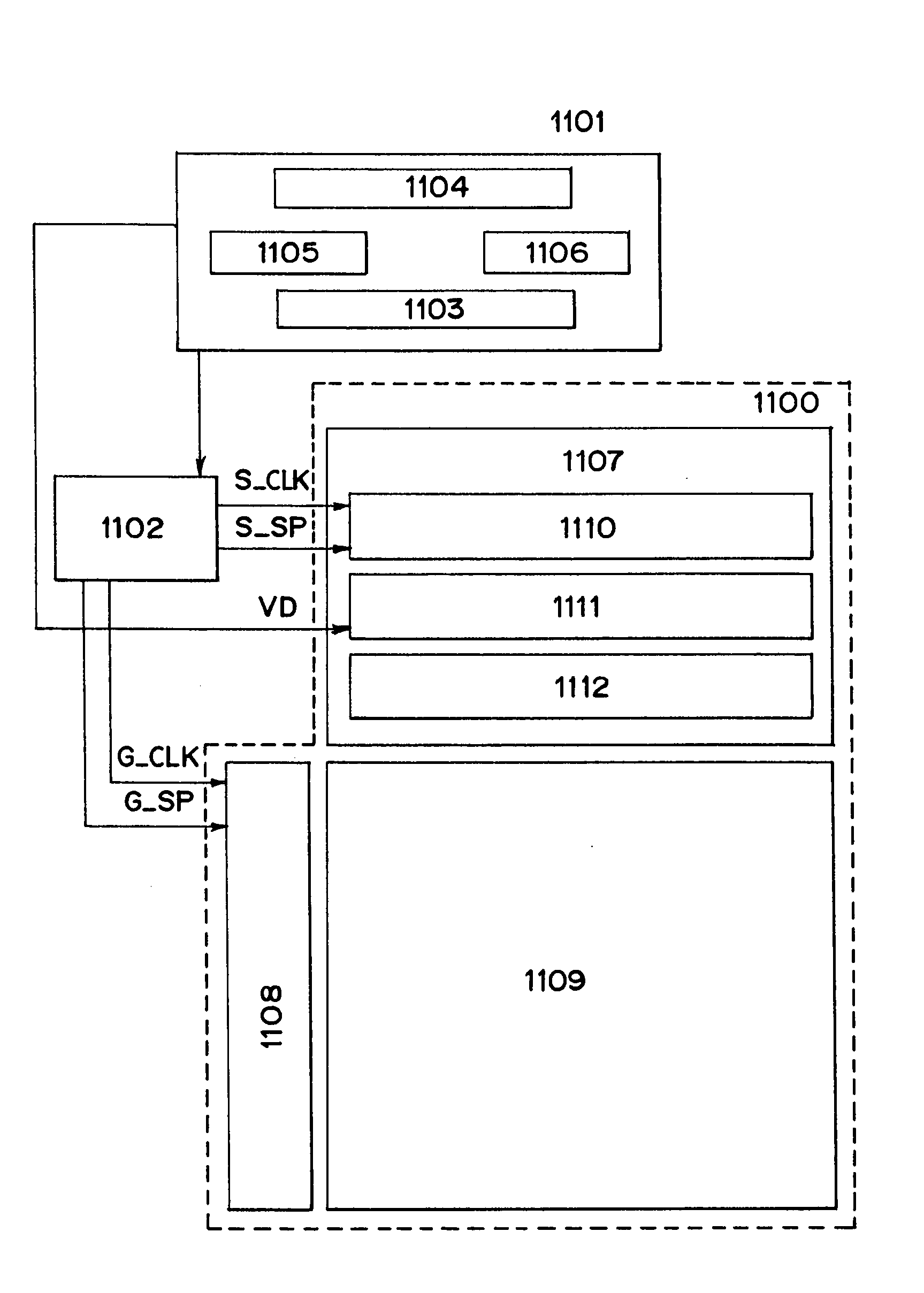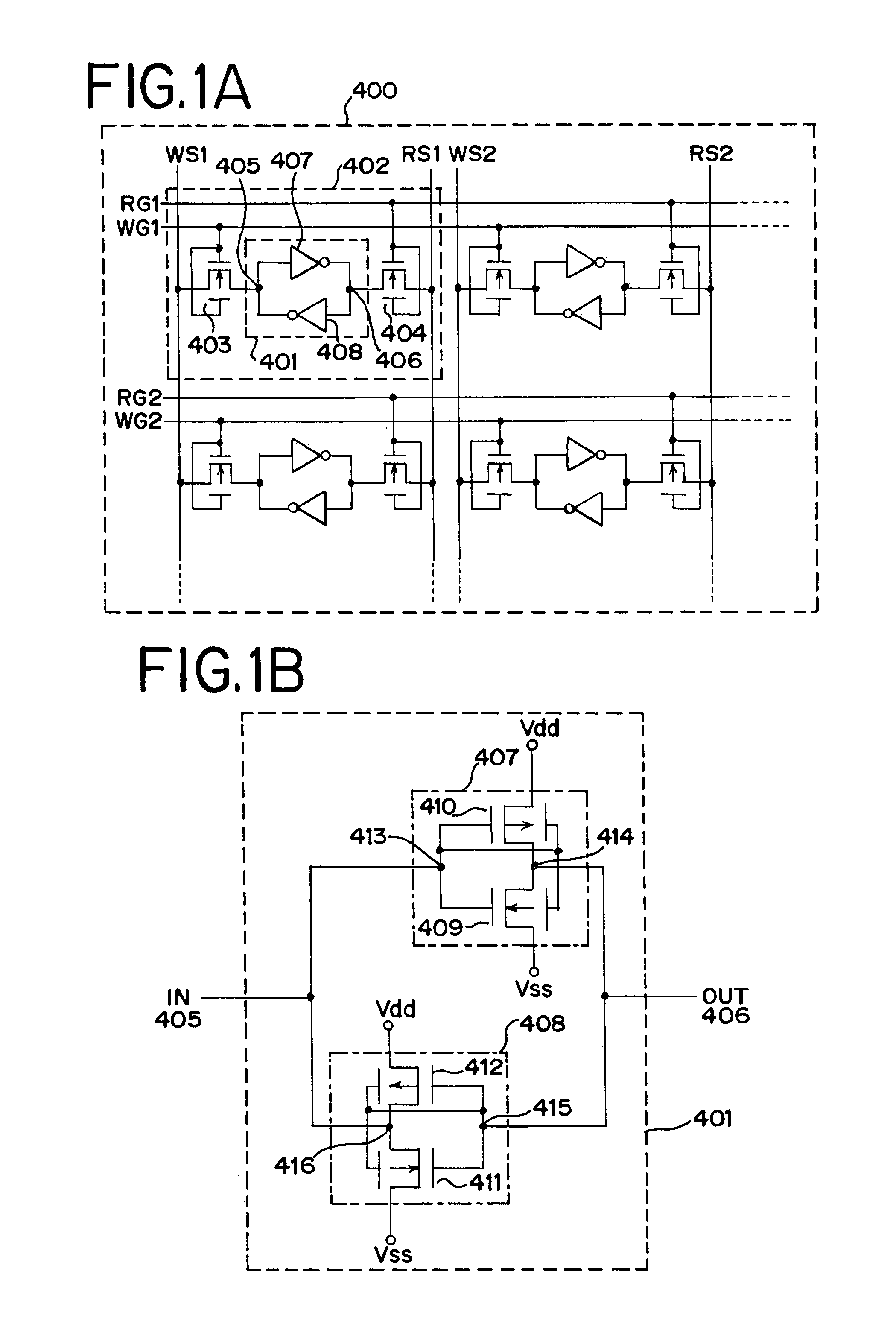Display system
a display system and display technology, applied in the field of display systems, can solve the problems of poor connection, increase of wiring resistance of the connection portion, increase of the area of the peripheral portion, etc., and achieve the effect of low power consumption
- Summary
- Abstract
- Description
- Claims
- Application Information
AI Technical Summary
Benefits of technology
Problems solved by technology
Method used
Image
Examples
embodiment 1
[Embodiment 1]
[0184]Manufacturing steps of manufacturing a displaying system according to the present invention will be described. In this embodiment, a method of simultaneously manufacturing TFTs (typically shown a switching TFT and a driving TFT in the figure) for a pixel portion, TFTs (an n-channel type TFTs and an p-channel type TFTs) for each driver circuit (a source signal line driver circuit and a gate signal line driver circuit) and TFTs (an writing TFT and an n-channel type TFT and a p-channel type TFT constituting the first inverter which are shown typically) on the same substrate will be described in detail.
[0185]In this embodiment, an example in which a common voltage is applied to the first electrodes of all the TFTs formed on the pixel portion and the first electrode is connected to the second electrode of each TFT formed on the driver circuit is shown. FIGS. 2A to 6 are cross-sectional views for explaining manufacturing steps.
[0186]In FIG. 2A, a substrate made of an a...
embodiment 2
[Embodiment 2]
[0226]In this embodiment, the different configuration of the display system from Embodiment 1 will be described.
[0227]FIG. 7 is a cross-sectional view of pixels of the display system in this embodiment.
[0228]Reference symbol 501 denotes an n-channel type TFT, which functions as a switching TFT, and 502 denotes a p-channel type TFT, which functions as a driving TFT. The switching TFT 501 includes a semiconductor film 553, a first insulating film 507 (507a and 507b), first electrode 505, a second insulating film 513, and second electrode 514. The semiconductor film 553 includes a first concentration impurity region 508 (508a and 508b), a second concentration impurity region 509 (509a and 509b) and channel-forming region 510.
[0229]The first electrode 505 is overlapped with the channel-forming region 510 with the fist insulating film 507 put therebetween. In addition, the second electrode 514 is overlapped with the channel-forming region 510 with the second insulating film...
embodiment 3
[Embodiment 3]
[0236]In this embodiment, a flip-flop circuit used for the shift register of a driver circuit will be described while taking a case of forming a TFT having a first electrode and a second electrode electrically connected to each other, as an example.
[0237]FIGS. 8A and 8B are circuit diagrams of a flip-flop circuit in this embodiment. The configuration of the flip-flop circuit included in the display system of the present invention is not limited to that shown in FIGS. 8A and 8B. In addition, the flip-flop circuit is only one example of the circuits included in the driver circuit. It does not necessarily mean that the display system of the present invention includes a flip-flop circuit.
[0238]The flip-flop circuit shown in FIG. 8A includes clocked inverters 1401 and 1402 and an inverter 1403. FIG. 8B is a circuit diagram which shows the respective circuit elements of the flip-flop circuit shown in FIG. 8A more concretely.
[0239]Each of the clocked inverters (1401 and 1402)...
PUM
| Property | Measurement | Unit |
|---|---|---|
| thickness | aaaaa | aaaaa |
| thickness | aaaaa | aaaaa |
| thickness | aaaaa | aaaaa |
Abstract
Description
Claims
Application Information
 Login to View More
Login to View More - R&D
- Intellectual Property
- Life Sciences
- Materials
- Tech Scout
- Unparalleled Data Quality
- Higher Quality Content
- 60% Fewer Hallucinations
Browse by: Latest US Patents, China's latest patents, Technical Efficacy Thesaurus, Application Domain, Technology Topic, Popular Technical Reports.
© 2025 PatSnap. All rights reserved.Legal|Privacy policy|Modern Slavery Act Transparency Statement|Sitemap|About US| Contact US: help@patsnap.com



